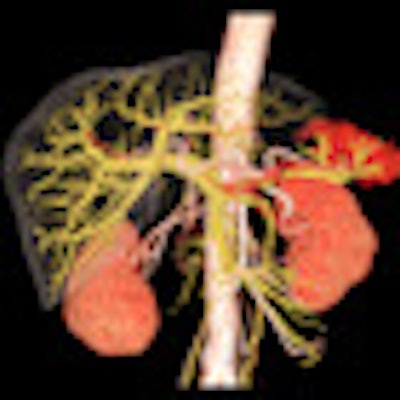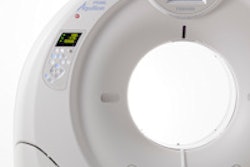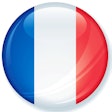
The market for CT equipment has been on an upward trend in terms of slices over the past two decades. More slices has meant higher prices for better image quality and increased clinical applications. Strong growth is projected for high-end CT, despite economic pressures, and importantly, the future of this market will rely heavily on the issue of dose reduction.
Despite the higher price tag associated with 64-slice CT systems and units with more slices, these two markets were estimated to experience positive growth in 2011 in Western Europe. The growth of the 64-slice market is unsurprising. These systems are increasingly the modality of choice in cardiac imaging and are increasingly combined with PET systems to improve perfusion information and prevent unnecessary revascularization procedures. Consequently, in Western Europe, 64-slice systems were projected to overtake 16-slice systems as the largest number of units purchased in 2011. In 2011, 64-slice equipment were estimated to account for 38% of total CT units sold in Western Europe, up from the 36% in 2010. Similarly, unit shipments for systems with more than 64 slices were estimated to grow by 10.0%. To put this in perspective, shipments of the less expensive systems with 16 slices or fewer were estimated to decline by between 3.9% and 1.3% in 2011.
Western European CT market growth -- Unit shipments
 Chart courtesy of InMedica.
Chart courtesy of InMedica.The projected growth in systems with more than 64 slices is perhaps more surprising, given their average selling price of $1.5 million and considering the economic pressures and reduced healthcare budgets faced by hospitals. Growth in this market is driven by a longer-term view being taken by some providers. They argue that these systems offer a better return on investment from enhanced image quality in the early detection of neural and abdominal disorders. Moreover, advancements in dose-reduction techniques, such as iterative reconstruction, have been shown to reduce radiation exposure from higher-slice CT equipment.
Dose reduction is likely to become even more important. While the risks of radiation exposure from CT examinations are not universally agreed upon, the need to remove any unnecessary risk is clear. The onus for dose reduction currently seems to fall heavily on the radiographer or other specialist. Fortunately, the research and academic community has actively taken on this challenge with a host of published successful techniques. These include ECG gating, adjusting the scout view and tube positioning, and the use of breast shields. Increasingly, however, the responsibility is shifting toward the suppliers who may need some push from regulatory bodies.
In February 2010, the U.S. Food and Drug Administration (FDA) produced guidance through the Initiative to Reduce Unnecessary Radiation Exposure from Medical Imaging. At the top of its list was to "establish requirements for manufacturers of CT and fluoroscopic devices to incorporate additional safeguards into equipment design, labeling and user training." Momentum has since then been building up for enforced dose-reduction initiatives from CT suppliers. This may include requiring CT equipment to be standard-fitted with proven dose-reduction features or software that better track, manage, and ultimately reduce radiation exposure. InMedica projects that such enforcement will become active in the U.S. in 2012, driving suppliers toward improved dose-reduction techniques and solutions. This will drive further growth in the CT market and provide further evidence base for the use of higher-slice equipment by maintaining image quality while reducing dose. These measures will also serve to benefit the European market, which is already calling for better dose management and adopt some of the same dose-reduced equipment.
Subsequently, the future of the CT market globally, and that of higher-slice equipment in particular, rests heavily on the success of dose reduction.
Theo Ahadome is a market analyst at InMedica (www.in-medica.com), the medical electronics research division of IMS Research. This article is based on InMedica's "The World Market for CT and PET-CT Equipment -- 2011" report. For more information, contact [email protected].
The comments and observations expressed herein do not necessarily reflect the opinions of AuntMinnieEurope.com, nor should they be construed as an endorsement or admonishment of any particular vendor, analyst, industry consultant, or consulting group.
Editor's note: The thumbnail on the home page shows a 3D CT scan of the abdomen. Image courtesy of Hitachi.



















